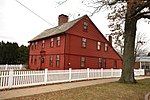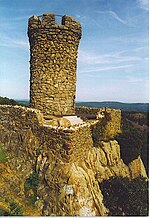H.C. Wilcox Technical High School
All pages needing cleanupBuildings and structures in Meriden, ConnecticutPublic high schools in ConnecticutSchools in New Haven County, Connecticut
H.C. Wilcox Technical High School, or Wilcox Tech, is a technical high school located in Meriden, Connecticut, that was first established in 1918. It receives students from many nearby towns. Wilcox Tech is part of the Connecticut Technical High School System. Like many Connecticut Technical High Schools, their decades-old building was recently renovated and expanded, at a cost of $77.5 million, and reopened in the fall of 2014.
Excerpt from the Wikipedia article H.C. Wilcox Technical High School (License: CC BY-SA 3.0, Authors).H.C. Wilcox Technical High School
Oregon Road, Meriden
Geographical coordinates (GPS) Address Nearby Places Show on map
Geographical coordinates (GPS)
| Latitude | Longitude |
|---|---|
| N 41.529 ° | E -72.831 ° |
Address
Wilcox Technical School
Oregon Road 275
06451 Meriden
Connecticut, United States
Open on Google Maps








